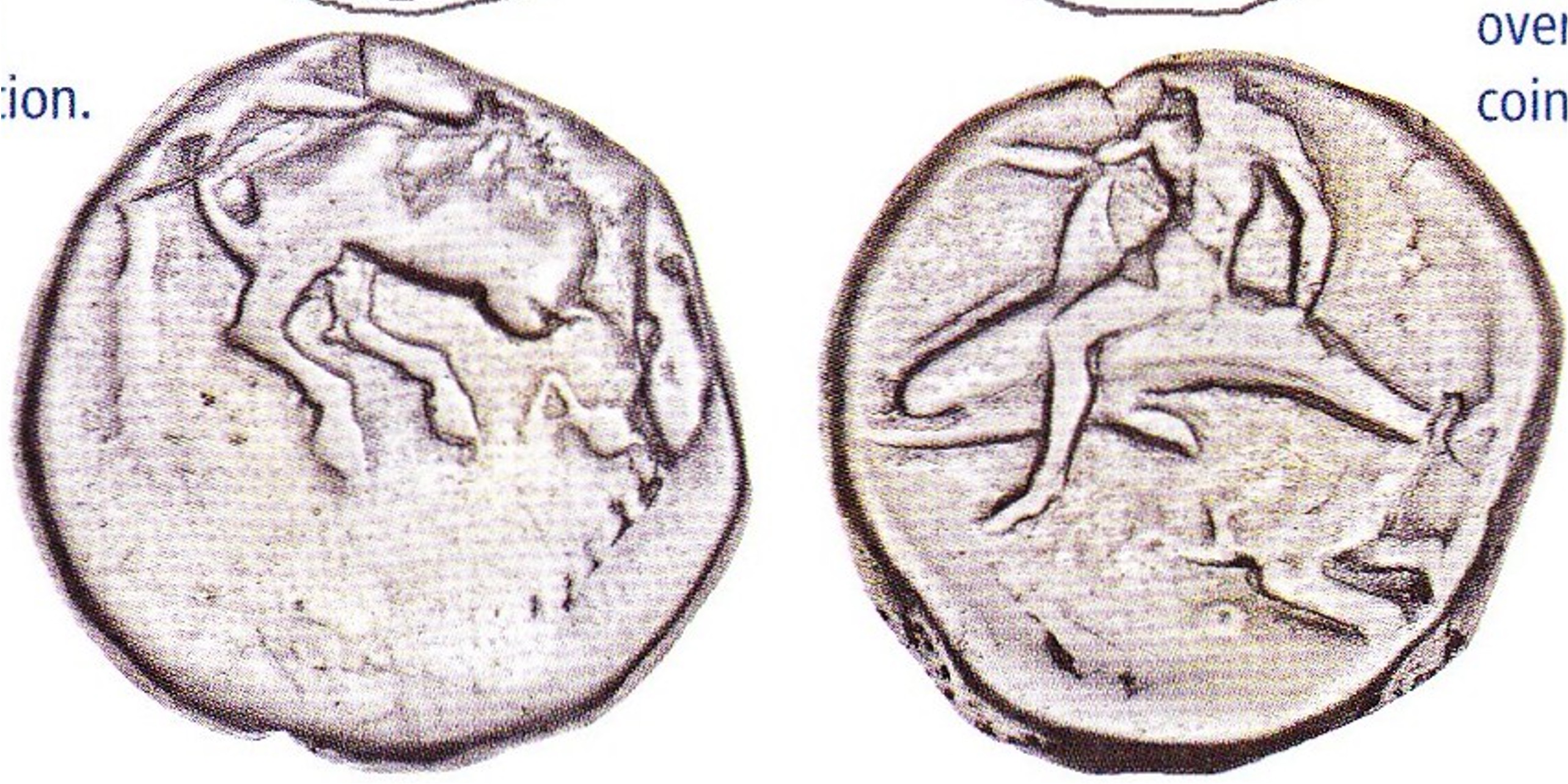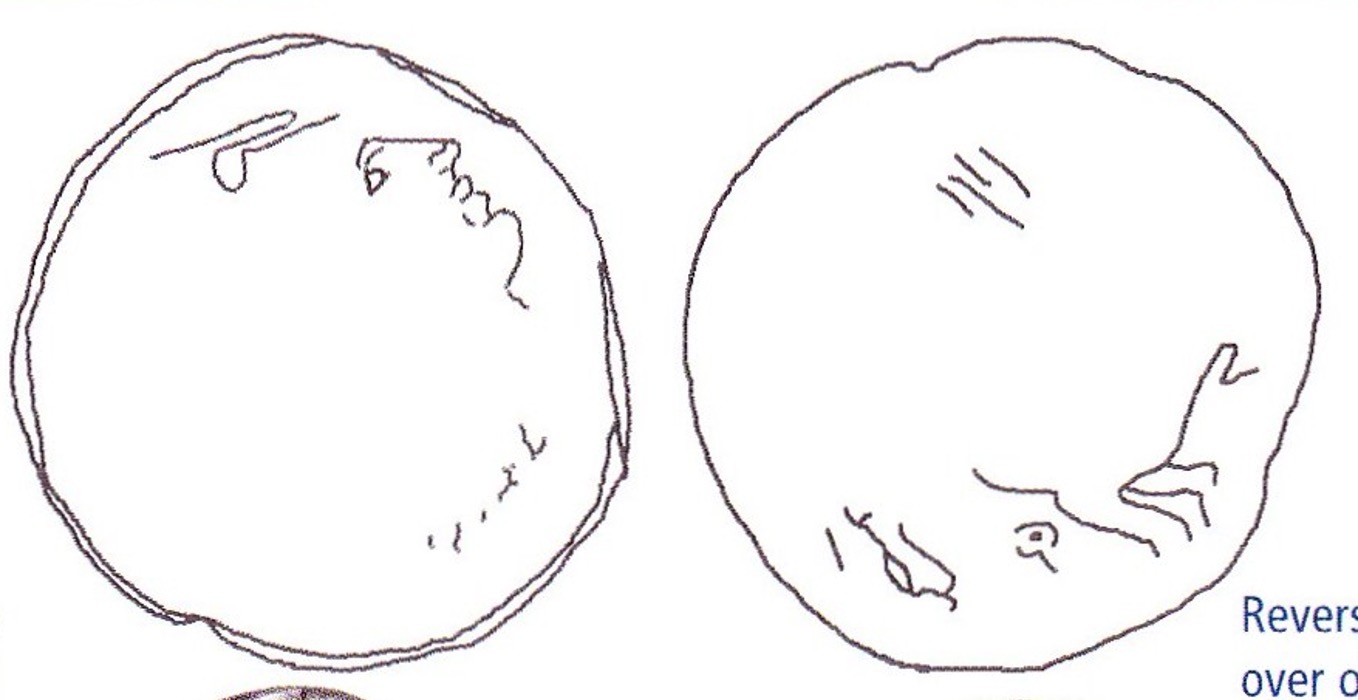365 BCE - 355 BCE | TAPAΣ
Overstriking coin
SO 1342 - Taras over Corinth.jpg
Overstruck variety
Corinth Aphrodite Pegasus right.jpeg
[1]
1342 Corinth (drawing).jpg
Description
| ObverseInscription or printing placed on the obverse.:
|
Horseman cantering right, arm hanging at side. Below horse, Δ.
|
ReverseInscription or printing placed on the reverse.:
|
TAPAΣ (Greek) Male character (Taras or Phalanthos), nude, seated sideways on dolphin left, holding kantharos in extended arm.
|
Mint and issuing power
| MintIdentifies the place of manufacture or issue of a numismatic object.:
|
Taras
|
Ancient regionAncient region.
|
Calabria
|
Modern countryModern country: Italy
|
AuthorityIdentifies the issuing power. The authority can be "pretended" when the name or the portrait of X is on the coin but he/she was not the issuing power. It can also be "uncertain" when there is no mention of X on the coin but he/she was the issuing power according to the historical sources:
|
|
Chronology
| FromIdentifies the initial date in a range assigned in a numismatic context. 365 BCE toIdentifies the final date in a range assigned in a numismatic context.. 355 BCE
|
Classical 480-323 BC  periodTime period of the numismatic object. periodTime period of the numismatic object.
|
Physical description
MetalThe physical material (usually metal) from which an object is made.: Silver 
|
WeightWeight of the numismatic object (in grams). in grams: 7.667.66 g <br />7,660 mg <br />
|
DenominationTerm indicating the value of a numismatic object. Examples: tetradrachm, chalkous, denarius.: nomos
|
AxisDescribes the directional relationship between the obverse and reverse of a numismatic object.: 66 mm <br />0.6 cm <br />
|
|
|
StandardStandard.: Achaian
|
References
| Coin referenceReference of the Coin:
|
Fischer-Bossert 1999, n° 613, MacDonald 2009, p. 11, n° 7
|
Coin series referenceReference to coin series study:
|
Ravel 19471Ravel 1947, n° 471, Fischer-Bossert 19992Fischer-Bossert 1999, group 40, n° 613 (V240/R470), MacDonald 20093MacDonald 2009, p. 11, n° 7, HN Italy4HN Italy, n° 880
|
Description
| ObverseInscription or printing placed on the obverse.:
|
Ϙ (Greek) Pegasus flying right (visible: rear legs, portion of belly line, forelegs, chest, neck, and jaw, Ϙ).
|
ReverseInscription or printing placed on the reverse.:
|
Head of Aphrodite right, wearing a Corinthian helmet (visible on reverse: Aphrodite's face, neck, forepart of helmet, traces of hair locks below).
|
Mint and issuing power
| MintIdentifies the place of manufacture or issue of a numismatic object. ᵖ:
|
Corinth
|
Ancient regionAncient region. ᵖ
|
Peloponnesus
|
Modern countryModern country: Greece
|
AuthorityIdentifies the authority in whose name (explicitly or implicitly) a numismatic object was issued. ᵖ:
|
|
Chronology
| FromIdentifies the initial date in a range assigned in a numismatic context. 400 BCE toIdentifies the final date in a range assigned in a numismatic context.. 350 BCE
|
Classical 480-323 BC  periodTime period of the numismatic object. periodTime period of the numismatic object.
|
Physical description
| DenominationTerm indicating the value of a numismatic object. Examples: tetradrachm, chalkous, denarius. ᵖ:
|
stater 
|
|
|
References
References
- ^ Ravel, Oscar E. (1990), Descriptive catalogue of the collection of Tarentine coins formed by M. P. Vlasto, London, Spink
- ^ Fischer-Bossert, Wolfgang (1999), Chronologie der Didrachmenprägung von Tarent, 510-280 v. Chr., Berlin, De Gruyter, xvii, 495 p., [84] pl.
- ^ Macdonald, David (2009), Overstruck Greek coins: studies in Greek chronology and monetary theory, Whitman Publishing, Atlanta.
- ^ Rutter N. Keith et alii (eds.) (2001), Historia Numorum Italy, London, xvi, 223 p., 43 pl.
- ^ Hoover, Oliver D. (2014), Handbook of Greek Coinage Series 4. Northern and Central Greece : Achaia Phthiotis, Ainis, Magnesia, Malis, Oita, Perrhaibia, Thessaly, Akarnania, Aitolia, Lokris, Phokis, Boiotia, Euboia, Attica, Megaris and Corinthia, sixth to first centuries BC, Lancaster, lxxi, 563 p.
 Traces of the overstruck variety
Traces of the overstruck variety

